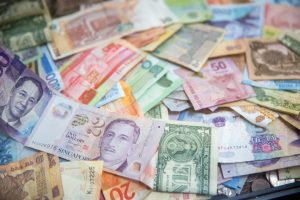Forex order flow is an important aspect of the foreign exchange market. It refers to the process by which buy and sell orders are executed in the market. Understanding how forex order flow works is essential for traders who want to make informed trading decisions and maximize their profits.
The forex market is a decentralized market, meaning that there is no central exchange where all trading takes place. Instead, participants in the market (such as banks, hedge funds, and individual traders) connect electronically to trade currencies. These participants submit buy and sell orders to their brokers, who in turn send them to a liquidity provider, such as a bank or financial institution.
The liquidity provider then matches the buy and sell orders and executes the trades. This is where forex order flow comes into play. The order flow is the process by which these buy and sell orders are matched and executed.
Forex order flow is determined by a few key factors. These include the supply and demand for a particular currency pair, the price at which traders are willing to buy or sell a currency, and market sentiment. Traders use a variety of tools and indicators to analyze these factors and make trading decisions based on them.
One of the most important tools used by traders to monitor forex order flow is the order book. The order book is a list of all the buy and sell orders for a particular currency pair at a particular price level. It shows traders how much liquidity is available at each price level, allowing them to gauge the strength of the market and make informed trading decisions.
Traders also use other indicators to analyze forex order flow. These include volume indicators, which show the amount of trading activity in the market, and price action indicators, which track the movement of prices over time.
Another important aspect of forex order flow is the role of market makers. Market makers are financial institutions that provide liquidity to the market by buying and selling currencies. They do this by maintaining a bid-ask spread, which is the difference between the price at which they are willing to buy a currency and the price at which they are willing to sell it.
Market makers play a crucial role in forex order flow by providing liquidity to the market. This allows traders to buy and sell currencies at any time, regardless of whether there are other traders willing to take the other side of the trade.
In addition to market makers, there are also other participants in the forex market that affect order flow. These include central banks, which can influence the exchange rate through monetary policy decisions, and large institutional investors, which can move the market with large buy or sell orders.
In conclusion, forex order flow is a complex process that involves the submission of buy and sell orders, the matching of those orders by liquidity providers, and the role of market makers in providing liquidity to the market. Understanding how forex order flow works is essential for traders who want to make informed trading decisions and maximize their profits. By monitoring the order book, volume indicators, and price action indicators, traders can gain insight into the strength of the market and make informed trading decisions based on that information.





